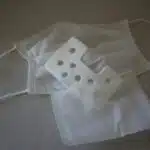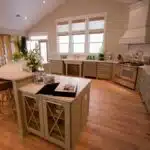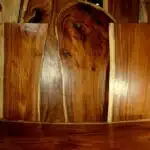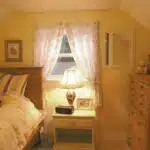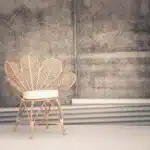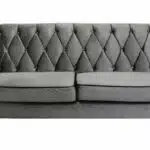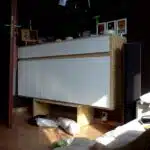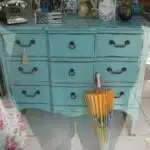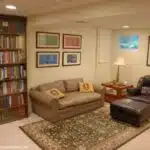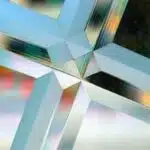Scalloped edges have become a popular trend in interior design, adding a touch of whimsy and charm to any room. This unique design feature can be incorporated into various elements of home decor, from curtains to pillows and even furniture. Achieving this look may seem daunting at first, but with the right tools and techniques, anyone can add this trendy detail to their home.
If you’re looking to incorporate scalloped edges into your interior design, there are several key factors to consider. From choosing the right fabric to mastering the technique for creating clean lines and curves, each step plays a crucial role in achieving this stylish design element. In this article, we’ll explore how to get that trendy scalloped edge design, providing tips and tricks for incorporating it into your home decor seamlessly. Whether you’re an experienced designer or new to the world of interior decorating, these guidelines will help you create beautifully crafted pieces that are sure to impress.
Understanding Scalloped Edge Design
Scalloped edge design is a classic embellishment that has been used in various decorative applications for centuries. Originating from the scallop shell, it was initially used in architecture and fashion as an emblem of status and wealth. The use of scalloped edges then spread to textiles, home decor, and even tableware. Today, this design element remains a popular choice in the world of interior design.
The scalloped edge design comes in different variations, which can be traced back to their cultural roots. For instance, the Chinese have been using this design element for thousands of years on their ceramics and textiles. On the other hand, Europeans adopted a more ornate approach with their use of scallops on furniture and architecture during the Renaissance period. Nowadays, modern designers are taking inspiration from these historical variations to create unique designs.
In recent years, scalloped edges have become one of the hottest trends in interior design. From curtains to bedding to throw pillows, this timeless pattern has been given a modern twist with bold colors and unconventional fabrics. Designers are also incorporating asymmetrical edges or combining multiple sizes of scallops to add interest to their creations. With its versatility and adaptability, it’s no wonder why scalloped edge design continues to remain relevant even in contemporary times. When it comes to incorporating this trend into your own space, the right fabric is crucial for achieving that perfect look.
Choosing The Right Fabric
When it comes to achieving that trendy scalloped edge design, choosing the right fabric is crucial. There are various fabric types available in the market, each with its unique properties that can affect the final outcome of your project. For instance, cotton and linen fabrics are perfect for creating a casual and relaxed look, while silk and velvet fabrics exude elegance and luxury.
Besides the type of fabric, color options are equally important in creating that perfect scalloped edge design. It’s essential to select a fabric color that complements your overall interior decor theme. Neutral colors like beige, white, or cream are versatile options that work well with most decor styles. However, if you’re looking to add some drama or create a focal point in your space, consider bold and vibrant hues like red or blue.
Choosing the right fabric is only one part of the process of achieving that trendy scalloped edge design. The next step involves measuring and marking your fabric correctly to ensure precision when cutting out your scallops. In the subsequent section, we’ll delve into this crucial step, providing you with all the information you need to cut out neat and uniform scallops on your chosen fabric.
Measuring And Marking Your Fabric
Accurately measuring and marking fabric is key to ensuring a successful project. The correct measurements should be taken of the fabric to ensure proper fitting and measurements. Marking fabric can be done with various tools depending on the fabric type and the desired effect. A fabric marking pen or tailor’s chalk are common methods of marking fabric. Once the fabric is measured and marked, it is time to begin cutting the fabric to the desired shape. When cutting fabric, it is important to use sharp scissors and the marked lines as a guide for a clean cut. Careful measuring, marking and cutting of fabric is essential for any project to ensure that the desired effect is achieved.
Measuring Fabric
Achieving accuracy in measuring fabric is crucial to ensuring the success of any scalloped edge design project. Even the slightest miscalculation can lead to an ill-fitting or uneven outcome. Thus, it is essential to use a reliable and precise tape measure when measuring your fabric.
In addition to measuring accuracy, you must also consider the texture of the fabric you are using. Fabric with heavy textures or patterns may require extra attention when marking and cutting to ensure that your scallops are symmetrical and consistent in size. Conversely, fabrics with a smoother texture may be easier to work with and require less effort in achieving a precise finish.
When measuring your fabric for a scalloped edge design, always take into account both accuracy and texture. By doing so, you will be able to create an elegant and seamless look that enhances the overall aesthetic of your space while also showcasing your attention to detail and precision as an interior designer.
Marking Fabric
When measuring fabric for scalloped edge variations, it is important to also consider the process of marking the fabric. Marking your fabric accurately is crucial to achieving a precise and symmetrical outcome in your project. This step should not be overlooked as even a small miscalculation can greatly affect the overall appearance of your design.
It is essential to take into account the type of fabric you are working with when marking it for scalloped edges. Different fabrics require different methods of marking, depending on their texture and pattern. For example, fabrics with heavy textures or patterns may require extra attention and care when marking as they can easily distort the shape of your design. On the other hand, smoother fabrics may be easier to mark and cut precisely.
As an interior designer, paying attention to detail is paramount in order to create stunning designs that meet client expectations. Accurate measuring and marking of fabric will ensure that your scalloped edge variations look professional and polished. By taking into account both fabric types and texture, you will be able to successfully execute this design technique with precision and finesse.
Cutting Fabric
After measuring and marking your fabric, the next crucial step is cutting it. Fabric selection plays a significant role in determining which cutting technique to use. For instance, if you are working with a sheer or delicate fabric, it is advisable to use sharp scissors and cut slowly and carefully, ensuring that the fabric does not fray or tear. On the other hand, heavier fabrics may require a rotary cutter or fabric shears for precision cutting.
When cutting scalloped edges, it is important to maintain consistency in shape and size. The key to achieving this is by using a template or guide that matches the desired shape of your scalloped edge variation. It would be best if you also considered the type of edges you want to achieve; some may require straight cuts while others may need curved cuts.
As an interior designer, precise cutting techniques are essential in creating clean and polished designs. The way you cut your fabric determines how well your finished product will look like. Taking into account both fabric selection and cutting techniques will help you execute scalloped edge variations with finesse while achieving professional-looking results that meet client expectations.
Cutting Your Fabric
After measuring and marking your fabric, the next step is cutting it to the desired shape. However, if you want to add a trendy scalloped edge design, you need to do some extra prep work before cutting. Let’s say you’re making a set of decorative pillow covers for a client’s living room. They’ve requested a unique touch that will make their space stand out. A scalloped edge design is just what they need.
Tips:
- Choose a scallop size that complements your fabric pattern and the overall look of the room.
- Use pinking shears to prevent fraying along the edges of your fabric.
- This technique is ideal for lightweight fabrics like cotton or linen.
Techniques:
- Create a template for your scallops using cardboard or cardstock.
- Trace the template onto your fabric with chalk or fabric marker.
- Cut along the traced line using regular scissors or pinking shears.
As an interior designer, it’s important to stay up-to-date with current trends and techniques. The scalloped edge design is one way to add a unique touch to any home decor project. By taking the time to properly prep your fabric and use the right tools, you can ensure that your finished product looks polished and professional.
Transition: Now that you have prepped your fabric with a trendy scalloped edge design, it’s time to move on to prepping your sewing machine for the next steps in creating beautiful decorative pillow covers for your client’s living room.
Prepping Your Sewing Machine
- Threading the sewing machine correctly is essential to creating a professional-looking scalloped edge design.
- Careful testing of the stitches should be done prior to beginning the project to ensure the best possible outcome.
- Adjusting the tension of the thread is paramount to ensure that the stitch is not too tight or too loose.
- Properly tensioning the thread is necessary to ensure that the fabric is not pulled too tightly and your design is not distorted.
- Care should be taken to ensure that the tension settings are appropriate for the type of fabric being used.
- Adjustments should be made throughout the project to ensure that the tension remains consistent for the desired scalloped effect.
Threading The Machine
As an interior designer, you know that adding a scalloped edge design is a great way to give your projects a trendy and stylish touch. However, before you begin sewing, it’s important to prepare your sewing machine properly. Threading the machine is the first step in prepping your machine and it’s essential to get it right.
To start, make sure your machine is unplugged and the presser foot is up. Identify the spool pin and place your spool of thread onto it. Next, follow the threading path outlined in your machine’s manual, making sure to pass the thread through all necessary guides along the way. Once you’ve reached the needle, make sure to thread it properly by placing the thread through the eye from front-to-back. Lastly, lower the presser foot and adjust tension as needed before testing on scrap fabric.
If you encounter any issues while threading, such as tangled threads or skipped stitches, don’t worry! Troubleshooting issues like these is common in sewing and can usually be resolved by adjusting tension or re-threading. Take a deep breath and refer back to your manual for guidance on how to make adjustments specific to your machine. With a little patience and practice, you’ll soon have that beautiful scalloped edge design on all of your projects!
Testing The Stitches
Once you’ve properly threaded your sewing machine, the next step is to test the stitches. Testing your stitching techniques is crucial to ensure that your project will turn out perfectly. Before starting on your actual project, it’s essential to practice on scrap fabric first. This will give you a chance to adjust tension and stitch length as needed before committing to your final piece.
To begin testing your stitches, select a few different types of stitches on your machine and try them out on scrap fabric. Take note of how each stitch looks and feels, paying close attention to any inconsistencies or defects in the stitching. Troubleshooting tips such as adjusting tension or re-threading may be necessary at this point.
If you encounter issues with your stitches during testing, don’t get discouraged! Troubleshooting common stitching issues such as skipped stitches or uneven tension is an important part of the sewing process. Refer back to your manual for specific guidance on how to make adjustments based on your machine’s settings and features. With some patience and practice, you’ll soon be able to create beautiful and flawless stitching on all of your projects.
Adjusting The Tension
When it comes to prepping your sewing machine, adjusting the tension is a critical step in achieving perfect stitches. Tension refers to the amount of tightness in the thread as it passes through the machine and determines how evenly the stitches will be formed. Imbalanced tension can result in skipped stitches, puckering, or even broken threads. Therefore, it’s essential to adjust the tension based on your fabric and thread type.
Adjusting tension may seem daunting at first, but with some practice and troubleshooting tips, you’ll soon master this skill. Start by testing your stitching techniques on scrap fabric before working on your actual project. If you notice any inconsistencies or defects in your stitches during testing, refer back to your manual for specific guidance on how to make adjustments based on your machine’s settings and features.
Troubleshooting issues such as skipped stitches or uneven tension is an integral part of creating beautiful and flawless stitching. To achieve balanced tension, you may need to adjust both the upper and lower thread tensions until they are evenly balanced. Remember that different fabrics and threads require different levels of tension, so be patient and experiment until you find what works best for each project. By taking the time to adjust tension properly, you’ll ensure that all of your sewing projects turn out perfectly every time!
Stitching Guidelines
When it comes to stitching techniques, there are several decorative embellishments that can be added to elevate the overall design. One of the most popular styles is the scalloped edge, which adds a charming and feminine touch to any project. To achieve this trendy look, it is important to use the right tools and techniques.
Start by selecting a fabric that complements your design and ensure that you have enough material for your desired project size. Once you have your fabric, use a pencil or fabric pen to mark out where you want your scallops to be. Then, carefully stitch along these lines using a small zigzag stitch. This will create the scalloped edge and prevent fraying.
To add further decorative embellishments, consider using contrasting thread colors or incorporating beads or sequins onto your scallops. This will add an extra layer of sophistication and make your project stand out even more.
Moving forward into creating a paper template, begin by tracing out the shape of your desired scallop onto a piece of paper. Once completed, cut out the template and use it as a guide for marking out your fabric. This will ensure that each scallop is uniform in size and shape throughout your project.
Creating A Paper Template
Like a painter’s canvas, a template is the foundation of any design project. It lays the groundwork for precision and accuracy, allowing you to create a flawless end result. Creating templates is an essential part of achieving that trendy scalloped edge design you’ve been dreaming of.
To start creating your paper template, gather the necessary materials: a ruler, pencil, and scissors. Next, measure and mark out your desired scalloped edge shape onto your paper. Remember to keep it consistent across all sections of your design for continuity. Using your scissors, carefully cut along the markings to create your template.
Improving precision in every step of the design process is crucial for achieving success. Creating a paper template allows you to visualize and plan out each element before even touching your fabric. With this level of preparation, you can ensure that each scallop is uniform in size and spacing throughout your entire project. Now that you have created a template with care and attention to detail, it’s time to move onto the next step: using your template to cut your fabric.
Using Your Template To Cut Your Fabric
After creating your paper template, it’s time to move on to the next step: using it to cut your fabric. This is where you’ll start seeing your scalloped edge design come to life. But before we dive into fabric cutting techniques for scalloped designs, let’s talk about the importance of choosing the best template for your fabric.
Using templates ensures that your scalloped edges are precise and consistent. They also help you save time by eliminating the need for measuring and marking each individual curve. When choosing a template, consider the size and shape of the curves, as well as the thickness and stretchiness of your fabric. A template that works well with thin cotton may not be suitable for thicker fabrics like wool or denim.
Now that you have chosen your template, it’s time to start cutting your fabric. Lay out your fabric on a flat surface and pin your template securely in place. Use sharp scissors or a rotary cutter to follow the curves of the template carefully. Remember to keep consistent pressure throughout each cut and avoid any sudden movements that may cause jagged edges. With these tips in mind, you’ll be able to create beautiful scalloped edge designs in no time!
As you finish cutting out all of your pieces using templates, it’s important to mention how crucial proper pinning is when beginning a new project like this one. Pinning will make sure everything stays in place while you are working on sewing together every piece so nothing shifts out of place during sewing which can cause uneven lines or mismatched seams later down the line!
Pinning Your Fabric
According to recent surveys, one of the most challenging aspects of creating a scalloped edge design is pinning your fabric. However, with the right techniques and a bit of practice, anyone can master this skill and achieve a flawless result.
To begin, it is important to understand the different pinning techniques available for fabric manipulation. Some common methods include using straight pins, safety pins or binder clips. While each technique has its own benefits, it is essential to choose the one that works best for you and your project.
Once you have selected your preferred pinning method, it is time to start manipulating the fabric. This involves folding or pleating the material in order to create the scallop shape. Be sure to take your time during this step as precision is key when achieving a professional-looking scalloped edge. With practice and patience, you will be able to create stunning designs that are sure to impress.
Now that you have mastered the art of pinning your fabric, it’s time to move on to sewing your scalloped edge. By following proper techniques and taking care during each step of the process, you can create beautiful pieces that will stand out in any space. So grab your materials and get started today!
Sewing Your Scalloped Edge
To achieve the trendy scalloped edge design, it’s important to understand the sewing techniques required. One technique is to use a scalloped edge rotary cutter or scissors to cut the fabric into the desired shape. Another technique is to create a template of the scalloped edge and trace it onto the fabric before cutting.
Once you have your scalloped edges cut out, there are endless decorative possibilities. You can add lace or other embellishments to enhance the edges or use contrasting fabrics for an eye-catching effect. It’s important to experiment and find what works best for your project.
Overall, sewing your scalloped edge requires patience and attention to detail. Take your time with each stitch and make sure everything is aligned properly before moving on. With practice and creativity, you can achieve a beautiful finished product that will impress anyone who sees it. Now, let’s move onto finishing your scalloped edge with some helpful tips and tricks!
Finishing Your Scalloped Edge
To finish your scalloped edge design, there are a few steps you can take to make it standout. Adding embellishments is one way to enhance the overall look of your design. For instance, you can add lace or ribbon in between the scallops to give an intricate and elegant feel.
Creative variations are another way to make your scalloped edge design unique. You can experiment with different sizes of scallops or try using contrasting colors for each layer of the scallop. These creative variations will help create an eye-catching and personalized piece that reflects your own style.
Incorporating these finishing touches will ensure that your scalloped edge design looks expertly crafted and visually appealing. By following these simple steps, you’ll be able to create beautiful pieces that stand out from the crowd. Next, we’ll discuss how to apply this technique specifically when adding scalloped edging to curtains.
Adding Scalloped Edging To Curtains
After finishing your scalloped edge, it’s time to add some personality to your curtains by incorporating a trendy scalloped edging. Scalloped edge inspiration can come from a variety of sources, such as fashion magazines or Pinterest boards. Take note of the different styles and colors that catch your eye, and use them as inspiration for your own design.
When it comes to DIY scalloped edge tips, there are a few things to keep in mind. First, make sure you have the right tools for the job. A good pair of sharp fabric scissors and a steady hand are essential for creating clean edges. Additionally, take your time when cutting and sewing the fabric to ensure precision and accuracy. Don’t rush through the process; take breaks as needed to avoid mistakes.
Now that you’ve mastered the art of scalloping edges on curtains, why not incorporate this design element into other areas of your home décor? One way to do this is by adding scalloped edging to pillows. This subtle detail adds texture and interest to an otherwise plain pillow cover. Use coordinating fabrics or mix-and-match patterns for a playful twist on traditional décor. With a little creativity and patience, you can easily transform any room with this stylish design technique.
Incorporating Scalloped Edging Into Pillows
Are you tired of plain and boring pillows? Do you want to add a touch of elegance to your home decor? Look no further than incorporating scalloped edging into your pillow designs. This trendy design adds a unique and sophisticated look to any space.
Incorporating scalloped edging into pillows can be done in many ways. One option is to use fabric with a pre-made scalloped edge or purchasing trim with the same design. Another option is to create the scalloped edge yourself by cutting and hemming the fabric at an angle. If you’re feeling adventurous, try incorporating scalloped edging into clothing or creating a DIY scalloped edge table runner for your dining room.
When choosing fabrics for your scalloped edging, consider using contrasting colors or textures to create visual interest. Velvet or satin fabrics can add a luxurious feel while patterned cottons lend a more casual vibe. Whatever style you choose, incorporating scalloped edging into your pillow designs will give them a unique and elegant touch.
Next up, let’s explore how to incorporate this design trend into furniture pieces. From chairs to curtains, there are many ways to elevate your home decor with the timeless charm of scalloped edging.
Scalloped Edging For Furniture
- Scalloped edging is a popular design trend for furniture, and there are a variety of types of scalloped edging that can be chosen from.
- It is possible to undertake a DIY approach when adding scalloped edging to furniture, although care and precision is required for the best results.
- Upholstery techniques such as piping, gimp and welting can be used to create a scalloped edge.
- The use of a router or jigsaw is also a viable option for achieving a scalloped edge, although it may be necessary to experiment with different techniques to get the desired result.
- When adding scalloped edging to furniture, it is important to consider the overall aesthetic of the piece and decide which type of scalloped edge would best suit the design.
- The use of scalloped edging can be a great way to add a unique, stylish touch to furniture and can be easily achieved with the right tools and techniques.
Types Of Scalloped Edging
Scalloped edging is a popular design trend in furniture that adds a touch of elegance and whimsy to any piece. There are various types of scalloped edge variations that can be achieved through different techniques, such as using a jigsaw or router to create the desired shape. The most common type of scalloped edging is the simple half-circle shape, but more intricate designs can also be achieved.
For those who enjoy DIY projects, creating a scalloped edge on furniture can be a fun and rewarding task. However, it is important to take the time to learn proper techniques and safety measures before attempting this project. It is also recommended to start with smaller pieces of furniture before moving onto larger pieces, as this will allow for more practice and experimentation with different designs.
When incorporating scalloped edging into interior design, it is important to consider the overall aesthetic of the space. Scalloped edges can add a playful touch to a room, but may not work well in more formal or traditional settings. They also pair well with other trendy design elements such as pastel colors and floral patterns. With the right technique and design approach, scalloped edging can elevate any piece of furniture into a chic statement piece.
Diy Scalloped Edging
Scalloped edging is a beautiful design trend that can add charm and elegance to any piece of furniture. There are various types of scalloped edge variations that can be achieved through different techniques, including DIY scalloped edge projects. For those who enjoy DIY projects, creating a scalloped edge on furniture can be a fun and rewarding task.
However, it is important to take the time to learn proper techniques and safety measures before attempting this project. Starting with smaller pieces of furniture allows for more practice and experimentation with different designs. It also helps to consider the overall aesthetic of the space when incorporating scalloped edging into interior design. Scalloped edges can add a playful touch to a room, but may not work well in more formal or traditional settings.
With the right technique and design approach, scalloped edging can elevate any piece of furniture into a chic statement piece. Whether using a jigsaw or router to create the desired shape, there are many ways to achieve beautiful and intricate designs. By incorporating trendy design elements such as pastel colors and floral patterns, scalloped edging can enhance any space with its whimsical charm.
Adding Scalloped Edging To Furniture
Scalloped edge trim has been a popular design element for furniture pieces in recent years. It adds a touch of elegance and whimsy to any space, making it a favorite among interior designers. One way to incorporate this trend into your home is by adding scalloped edging to furniture. DIY furniture upgrades have become increasingly popular, and scalloped edging can be an excellent addition to any piece.
Adding scalloped edging to furniture requires careful consideration of the style and aesthetic of the piece. The type of furniture being upgraded can also affect the difficulty level of the project. For example, adding scalloped edging to a small side table may be easier than doing so on a larger cabinet or dresser. However, with patience and proper technique, adding scalloped edging can transform any piece into a stunning statement piece.
When incorporating scalloped edging into furniture, it’s important to pay attention to the details. Choosing the right color palette and patterns can create a cohesive look that ties together different elements in the room. For example, pastel colors and floral patterns are perfect for creating a feminine and playful feel. Ultimately, adding scalloped edging to furniture is an excellent way to elevate your home decor and add personality to your space without breaking the bank.
Maintenance And Care For Scalloped Edges
Scalloped edging is a popular design trend that can add a touch of elegance to any piece of furniture. However, achieving this look requires skill and attention to detail. To get the scalloped edge design just right, it is important to use the right tools and techniques.
Cleaning tips are essential for maintaining scalloped edges. Dust and debris can accumulate in the curves of the pattern, making it difficult to clean with a standard cloth or duster. To prevent damage, try using a soft-bristled brush or vacuum cleaner attachment to gently remove dirt from the grooves. Avoid using harsh chemicals or abrasive cleaners that can scratch or damage the surface.
Preventing fraying is another key consideration when working with scalloped edges. The delicate shape of the design can make it prone to fraying over time, especially if it is exposed to regular wear and tear. To keep your scalloped edges looking their best, consider using a fabric glue or clear nail polish along the cut edges. This will help seal the fabric and prevent any fraying from occurring.
In summary, incorporating scalloped edging into your furniture design can add a sophisticated touch to any room. However, maintaining this look requires careful attention to cleaning and preventing fraying. By following these tips, you can ensure that your scalloped edges stay beautiful for years to come.
Conclusion
The scalloped edge design has been around for centuries, and it’s here to stay. It adds a touch of elegance, sophistication, and femininity to any fabric-based décor element. However, getting that perfect scalloped edge can be challenging if you don’t know the right technique. From choosing the right fabric to measuring, marking, cutting, and sewing, there are many steps involved in creating a flawless scalloped edge.
One metaphor for achieving a beautiful scalloped edge is baking a cake. Just like you need the right ingredients, tools, and techniques to make a delicious cake, you need the same elements to create a stunning scalloped-edge design. You must mix and match your fabrics carefully, measure and mark with precision, cut with accuracy and sew using the correct settings on your machine. The result is a masterpiece that looks good enough to eat!
As an interior designer, I have seen how adding scalloped edges can transform any space from drab to fab. Whether it’s curtains framing the windows or pillows placed on the sofa or bed or furniture accenting the room’s corners and curves, scalloped edges add texture, dimensionality and visual interest. However, it’s essential to maintain and care for these edges so that they remain in pristine condition for years to come. With proper upkeep and attention to detail in each step of the process of creating them – from choosing materials through final installation – anyone can achieve that trendy scalloped edge design!
Image Credits
- “a tall building with a bird on the roof” by David Vives (featured)




